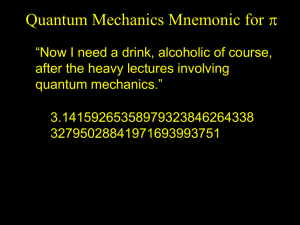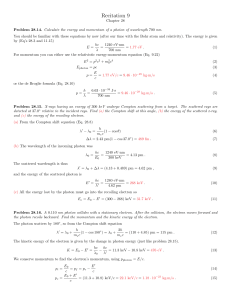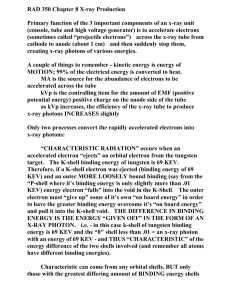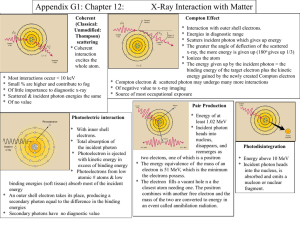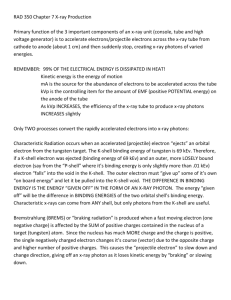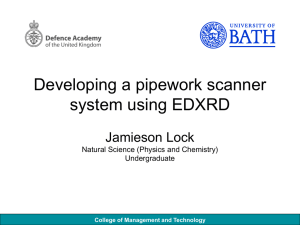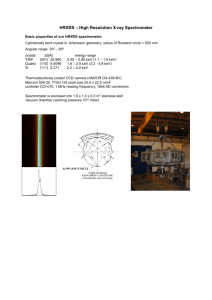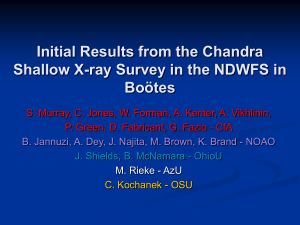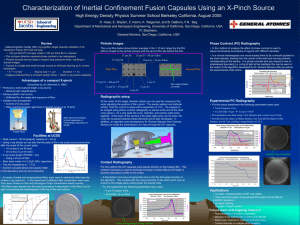Mammography x
advertisement
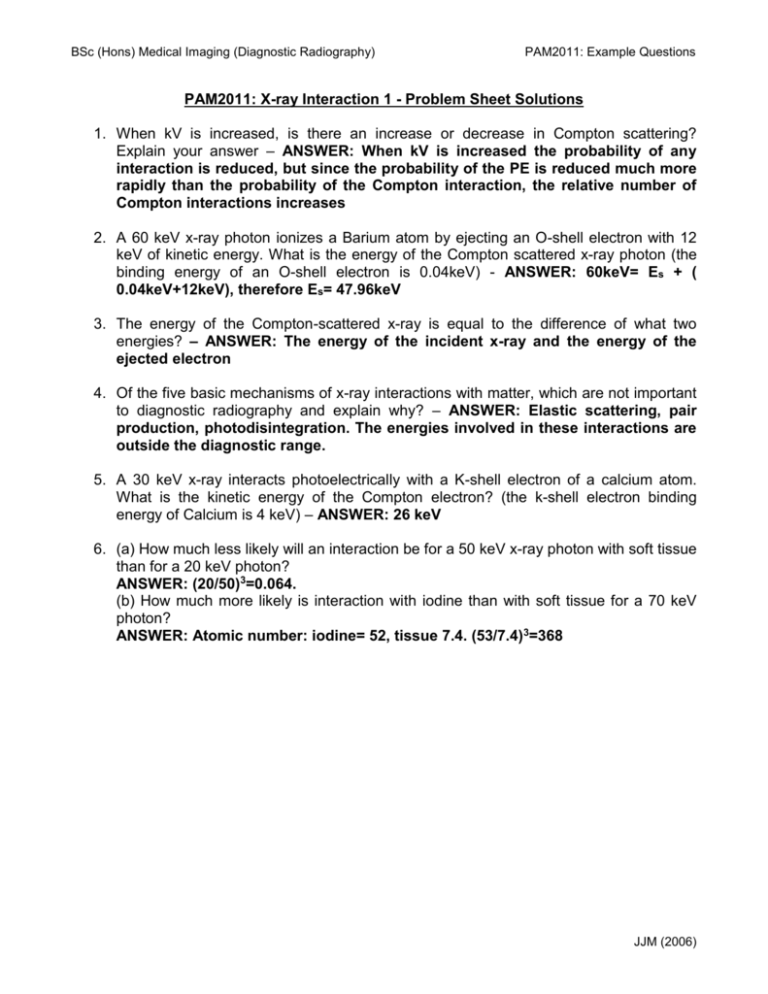
BSc (Hons) Medical Imaging (Diagnostic Radiography) PAM2011: Example Questions PAM2011: X-ray Interaction 1 - Problem Sheet Solutions 1. When kV is increased, is there an increase or decrease in Compton scattering? Explain your answer – ANSWER: When kV is increased the probability of any interaction is reduced, but since the probability of the PE is reduced much more rapidly than the probability of the Compton interaction, the relative number of Compton interactions increases 2. A 60 keV x-ray photon ionizes a Barium atom by ejecting an O-shell electron with 12 keV of kinetic energy. What is the energy of the Compton scattered x-ray photon (the binding energy of an O-shell electron is 0.04keV) - ANSWER: 60keV= Es + ( 0.04keV+12keV), therefore Es= 47.96keV 3. The energy of the Compton-scattered x-ray is equal to the difference of what two energies? – ANSWER: The energy of the incident x-ray and the energy of the ejected electron 4. Of the five basic mechanisms of x-ray interactions with matter, which are not important to diagnostic radiography and explain why? – ANSWER: Elastic scattering, pair production, photodisintegration. The energies involved in these interactions are outside the diagnostic range. 5. A 30 keV x-ray interacts photoelectrically with a K-shell electron of a calcium atom. What is the kinetic energy of the Compton electron? (the k-shell electron binding energy of Calcium is 4 keV) – ANSWER: 26 keV 6. (a) How much less likely will an interaction be for a 50 keV x-ray photon with soft tissue than for a 20 keV photon? ANSWER: (20/50)3=0.064. (b) How much more likely is interaction with iodine than with soft tissue for a 70 keV photon? ANSWER: Atomic number: iodine= 52, tissue 7.4. (53/7.4)3=368 JJM (2006)

